KNOWLEDGE BASE
- Details
Contact lenses are medical devices used to correct vision, placed directly on the surface of the eye or cornea unlike traditional eyeglasses. They are typically made of soft, breathable materials for comfort and adaptability. Contact lenses can correct vision problems such as nearsightedness, farsightedness, and astigmatism, providing a more natural appearance without obscuring facial features.
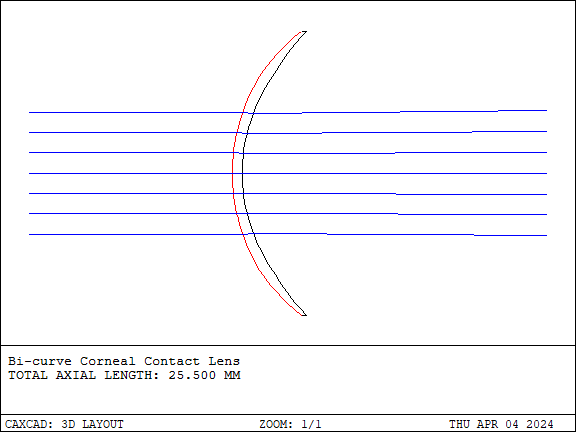 |
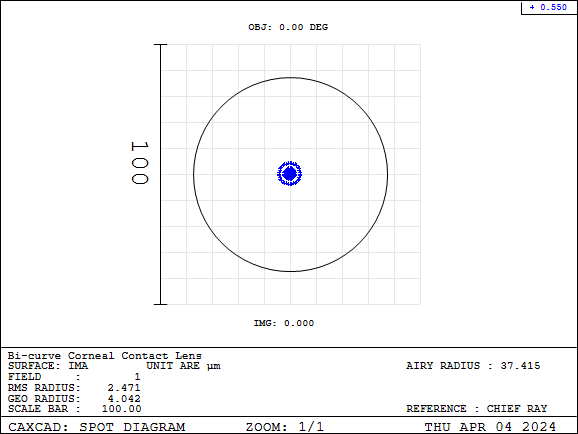 |
- Details
Using CAXCAD for eyeglass lens design is straightforward. Although progressive lens design is not covered in this article, it's worth noting that progressive lenses typically adhere to the basic curve design principles of other eyeglass lenses.
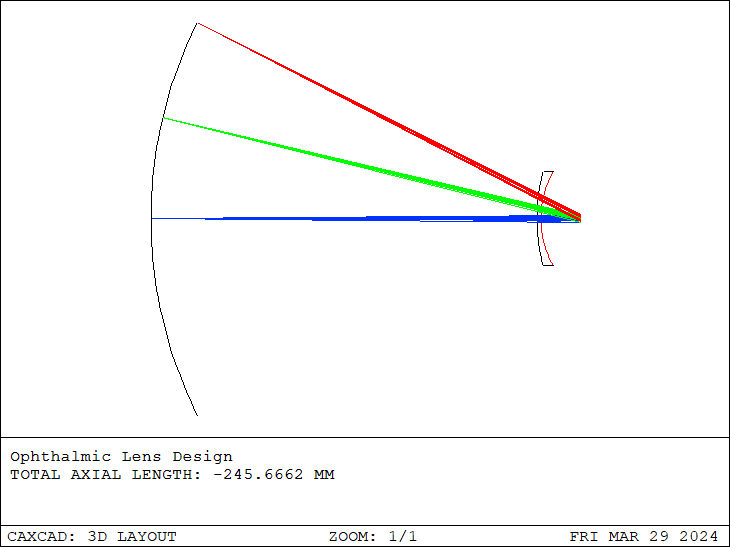
- Details
The human eye is a vital component of the human visual system, responsible for receiving light signals and converting them into visual perception. The human eye consists primarily of the eyeball and the visual nerve. The eyeball includes structures such as the cornea, iris, lens, vitreous humor, and retina.
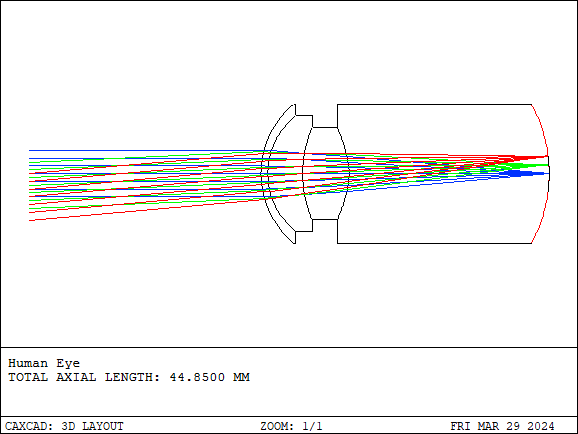
- Details
Ray Aiming is an iterative ray tracing algorithm used in optical design work to find rays in object space that correctly fill the given aperture size. This article will introduce the usage of Ray Aiming and Pupil Aberration in CAXCAD:
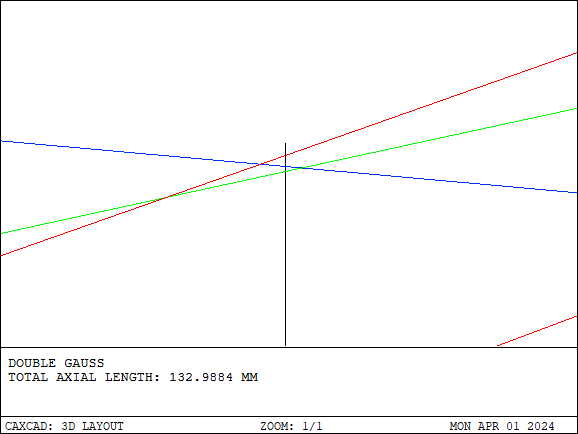
- Details
The Cooke triplet is a photographic lens designed and patented (patent number GB 22,607) in 1893 by Dennis Taylor who was employed as chief engineer by T. Cooke & Sons of York. It was the first lens system that allowed elimination of most of the optical distortion or aberration at the outer edge of lenses. The Cooke triplet is noted for being able to correct the Seidel aberrations.

- Details
A doublet is an optical lens assembly consisting of two individual lenses cemented or spaced closely together. The purpose of a doublet is to correct chromatic aberration, a common optical aberration that causes different wavelengths of light to focus at different distances from the lens, resulting in color fringing or blurring in images.

- Details
An aspherical lens is an optical component with a non-spherical surface profile, meaning it deviates from the shape of a perfect sphere. Unlike spherical lenses, which have a constant curvature across their surface, aspherical lenses feature varying curvatures that help correct optical aberrations and improve image quality.

- Details
A singlet refers to a single optical element, typically a lens, that is used in optical systems. Unlike compound lenses, which consist of multiple lens elements, singlets are composed of only one piece of optical material. Singlets are often used in simple optical setups where cost, size, or weight constraints are significant factors, or in applications where aberrations can be effectively controlled using a single optical surface.


